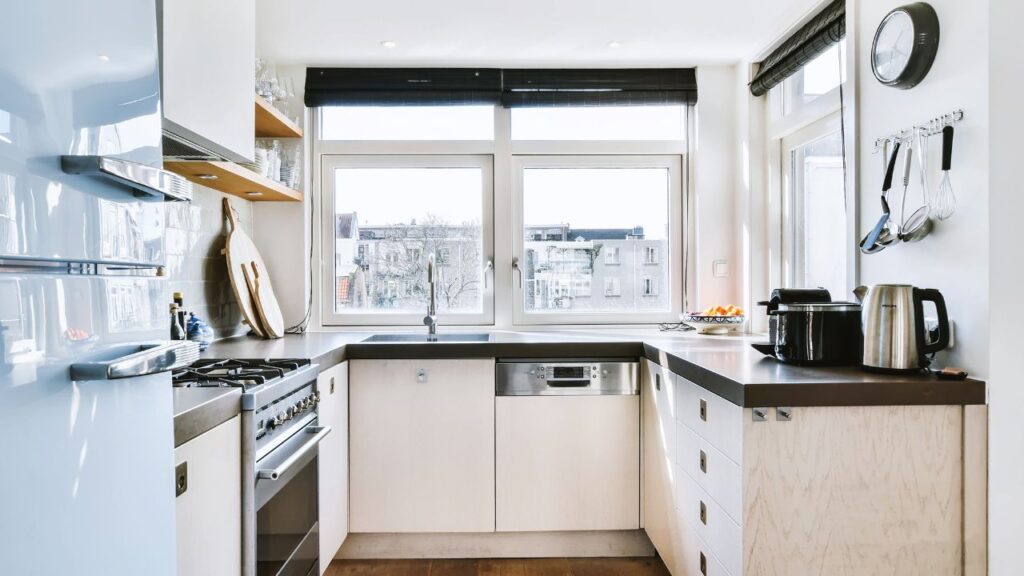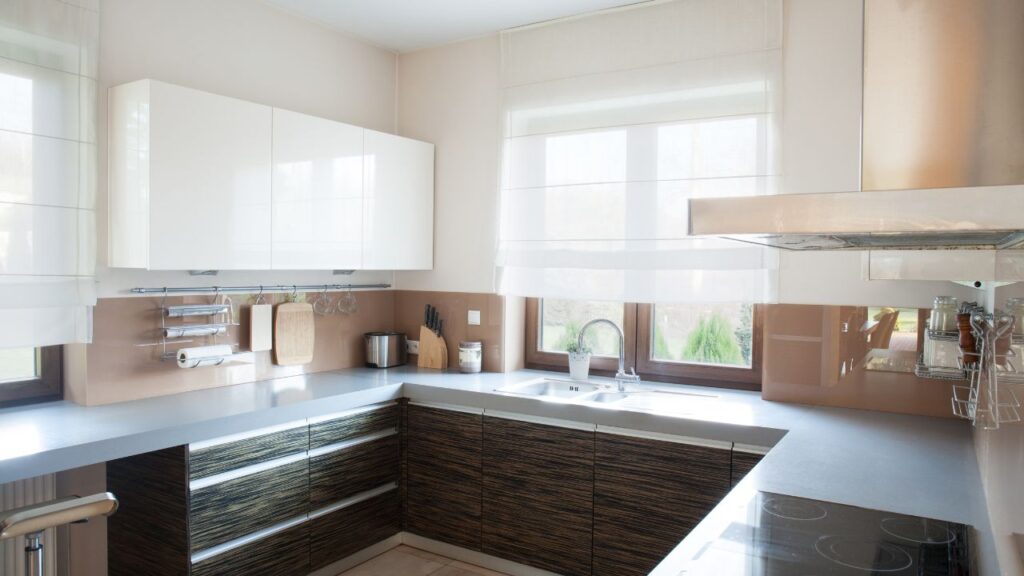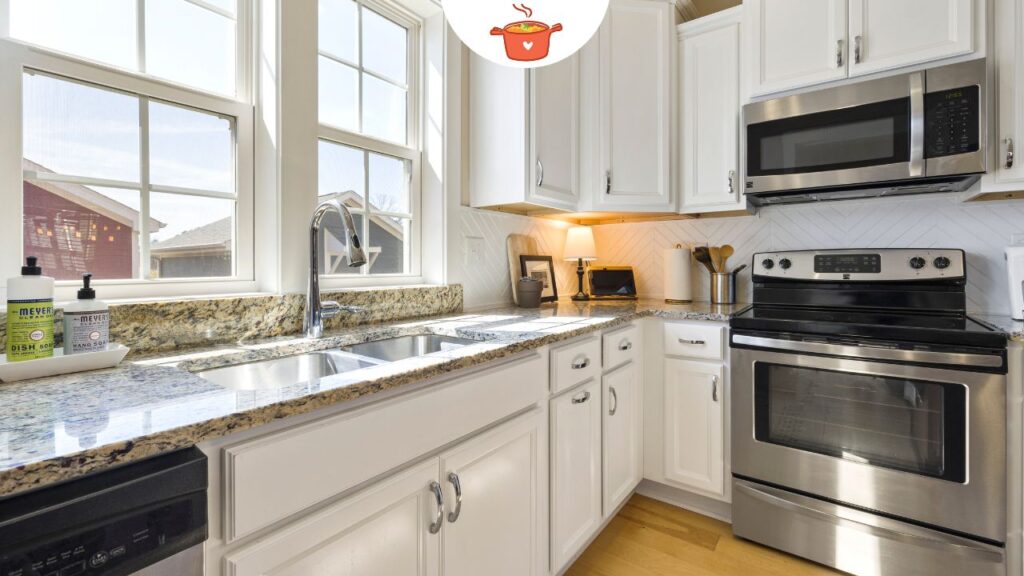
Have you ever found yourself standing in the middle of your small kitchen, wondering how to make everything fit? Trust me, I’ve been there. Whether you’re juggling meal prep for the week or just trying to find a spot for your coffee maker, a cramped kitchen can feel like an obstacle course. But here’s the good news: organizing a small kitchen space is totally doable—and it doesn’t have to be a stressful project.
In this guide, I’ll walk you through some simple and creative strategies to help you make the most of your kitchen, no matter how small it is. From decluttering your counters to utilizing hidden storage, I’ll share the tips and tricks that worked for me. By the end of this, you’ll feel more organized and ready to cook in a kitchen that feels larger, more functional, and—let’s be honest—much more enjoyable to work in.
So, if you’re ready to tackle that mess and create a kitchen that actually works for you, keep reading! We’ll dive into how to organize a small kitchen space, one step at a time.
Understanding Your Kitchen’s Layout
Importance of Layout in Small Kitchens
When you’re working with a small kitchen, the layout is everything. The way your kitchen is set up can make or break your ability to cook efficiently, and it’s all about maximizing small kitchen space. A well-organized layout can make your kitchen feel less cramped, even if square footage is limited. When designing your kitchen, think about how you move through the space. Do you often have to walk around open drawers or squeeze past appliances? If so, it’s time to rethink your layout.
An efficient kitchen layout helps you save time, avoid unnecessary clutter, and creates a smoother cooking experience. For example, making sure your stove, fridge, and sink are within easy reach of each other can streamline your cooking process—especially if you’re short on space. In fact, a smart layout can make your small kitchen feel spacious and organized, even if you’re working with just a few feet of counter space.
Common Layouts for Small Kitchens
There are a few classic kitchen layouts that work particularly well for small spaces. Let’s dive into these options and see how they can help you get the most out of your limited kitchen area.
- Galley Kitchen: This is one of the most efficient layouts for small kitchens. It’s essentially a two-wall design with a narrow passage in between. With a galley kitchen, everything is within arm’s reach. The downside? You’re limited in terms of counter space, but smart use of vertical storage can make up for that.
- L-Shaped Kitchen: The L-shaped layout makes use of two adjacent walls, creating an open area for movement. This layout works well when you have a corner space or need an island in the middle for additional prep or dining space. It’s a great balance between functional counter space and flow.
- U-Shaped Kitchen: If you have a slightly larger but still compact kitchen, the U-shaped layout provides counter space on three walls, which is perfect for organizing everything from utensils to ingredients. It’s highly efficient but requires careful planning to prevent overcrowding.
- Single-Wall Kitchen: This layout lines everything up along one wall. It’s great for truly tiny spaces or studio apartments. The single-wall design allows you to keep everything in one spot, but it also limits the amount of counter space and storage options.

Choosing the Right Layout for Your Space
Now, how do you decide which layout is right for your kitchen? Consider your daily needs. Are you a solo cook or do you often entertain? Do you need a lot of storage or do you prefer a minimalist approach?
- Galley: Perfect for efficient cooking but may feel tight if you have more than one cook in the kitchen at a time.
- L-Shaped: Works well for a balance of space and functionality, especially if you like open, airy spaces.
- U-Shaped: Ideal for maximizing counter space if you need more room for cooking and prep work.
- Single-Wall: Best if you want a streamlined, minimalist design or if your kitchen is very small.
Once you’ve figured out your kitchen layout, you’ll have a better understanding of how to arrange your appliances, utensils, and storage to optimize your cooking flow.
Decluttering Your Small Kitchen
Why Decluttering is Essential
I know—decluttering sounds like a chore. But trust me, getting rid of unnecessary items is the quickest way to make a small kitchen feel a lot bigger. When you have fewer things to manage, there’s more room for the items you actually need. Plus, an organized kitchen can help you cook faster and more efficiently. It’s a win-win!
Decluttering isn’t just about getting rid of old, unused items. It’s about creating space for the things that matter. The less clutter you have, the easier it is to keep everything accessible. And the best part? A decluttered kitchen feels more relaxing to be in, which makes cooking feel less like a task and more like a hobby.
Step-by-Step Decluttering Process
Let’s break it down into manageable steps, shall we? Here’s how I approach the decluttering process to really make the most of my small kitchen:
- Start with the Pantry: It’s easy for your pantry to become a black hole of expired foods and forgotten snacks. Start by pulling everything out. Check expiration dates, and get rid of items that no longer serve you. Group similar items together (grains, canned goods, spices) to keep things organized.
- Clear the Counters: Keep only the essentials on your countertops. The more space you have on your counters, the less cluttered your kitchen will feel. Store items like mixers, toasters, and blenders in cabinets when they’re not in use.
- Tidy Up the Drawers: Drawers can easily become junk drawers in a small kitchen. Consider investing in drawer dividers to keep things like cutlery, measuring spoons, and kitchen tools neatly separated.
- Get Rid of Unused Cookware and Gadgets: Be honest with yourself—how many times have you used that juicer, waffle maker, or popcorn machine? If it’s been months, consider donating or storing these items elsewhere.
Tips for Getting Rid of Unnecessary Items
It’s tough, but sometimes, less is more. Here are a few tips that might help you let go of things that are just taking up space:
- Purge Items You Haven’t Used in 6 Months: If it hasn’t seen the light of day in half a year, it might be time to let it go.
- Think Minimalist: Only keep the items you use regularly. If you have multiple versions of something (e.g., three different knives), keep just the best one.
- Donate or Sell: If an item is still in good condition, consider donating it or selling it. A decluttered kitchen is worth more than the stuff you’re holding onto.
By following these steps and being ruthless with what you keep, you’ll transform your small kitchen into an organized haven. The best part? It’ll be easier to find what you need, and cooking will feel a lot less stressful!

Smart Kitchen Organization Strategies
Vertical Storage Solutions
In a small kitchen, every inch of space counts, and that includes the walls! Vertical storage is your best friend when it comes to saving counter space. Think about using your walls for more than just decoration—they can hold shelves, hooks, and racks that keep your kitchen essentials off the counter. Vertical storage in the kitchen is a simple yet effective way to organize utensils, pots, pans, or even spices.
You can install floating shelves above your countertop or use wall-mounted racks to store your most-used kitchen tools. Hooks on the walls can hold measuring cups, ladles, or even your favorite kitchen towels. This way, your counter space stays clear for cooking and prep, and everything you need is right at your fingertips.
Utilizing Cabinets and Drawers Effectively
Now, let’s talk about the cabinets and drawers—arguably the most essential storage spaces in your kitchen. If you haven’t already, consider using drawer dividers to keep your utensils neat and organized. It’s easy for drawers to become a jumbled mess, but dividers can help you separate everything from knives to spoons. You can also install pull-out shelves in your cabinets, which are perfect for deep cupboards that are hard to access. With pull-out shelves, you’ll never have to dig around to find that mixing bowl or small appliance again.
Additionally, over-the-door organizers are a fantastic solution for your cabinet doors. They can hold everything from lids to cleaning supplies. These simple tools can help you make the most of the space you already have without needing additional storage furniture.
Maximizing Pantry Space
The pantry is often one of the first places that can get chaotic, especially in a small kitchen. However, with a little organization, your pantry can actually help you save a ton of space. Categorizing pantry items is key—group similar products together, like grains, canned goods, and snacks. This way, you can quickly find what you need without sifting through clutter.
Using stackable containers is another game-changer. These containers not only help you maximize vertical space, but they also keep dry foods fresh and easy to access. Label them to ensure you don’t have to guess what’s inside. If you don’t have shelves, don’t worry—there are many pantry organizers designed for small spaces that can fit under counters or in awkward corners.
Creative Storage Solutions for Small Kitchens
Under-Cabinet and Overhead Storage
When it comes to multi-purpose kitchen storage, under-cabinet and overhead spaces are often underutilized. These spaces are perfect for hanging your pots, pans, and utensils. You can install a pot rack underneath your cabinet or use a pegboard on the wall to hang frequently used items. This frees up valuable drawer space while keeping your kitchen looking neat and organized.
Another clever trick is to use overhead storage—think about hanging baskets or wire racks to store things like onions, garlic, or even fruits and vegetables. This keeps them easily accessible and frees up shelf space for other essentials. If you have an island, consider adding a shelf or storage compartment below to maximize every square foot.
Utilizing Unconventional Spaces
Sometimes, the best storage solutions are the ones you never thought of. Small kitchen spaces often have hidden gems just waiting to be transformed into storage. Consider the area behind doors or the back of cabinets—these often-overlooked spaces can hold things like dish soap, cleaning supplies, or even a spice rack. Under your sink is another prime spot for storage. You can use stacking bins or adjustable organizers to store cleaning supplies, trash bags, and more. These creative storage solutions not only make your kitchen more functional but also save space for the things you actually use.
Budget-Friendly Tips for Organizing Your Small Kitchen
Affordable Organization Ideas
Organizing your kitchen doesn’t have to break the bank. There are plenty of budget-friendly shelving units, baskets, and dividers available at your local home goods store. These items don’t need to be expensive to be effective. Baskets can help you group similar items together on open shelves, and adjustable shelving units can help you organize your pantry without spending a fortune. Check out thrift stores or online marketplaces for even more affordable storage solutions.
If you’re short on storage space, consider getting creative with what you already have. A simple tension rod under the sink can hold cleaning supplies or spray bottles, and inexpensive drawer organizers can transform cluttered drawers into tidy spaces.
Repurposing Everyday Items
You don’t always need to buy fancy containers or organizers. Instead, get resourceful by repurposing everyday items. Old jars can be used to store everything from herbs and spices to dried beans and pasta. You can also repurpose unused furniture, like an old bookshelf or a sturdy ladder, as extra storage. It’s a great way to upcycle while saving money. Plus, repurposed items often add a personal touch to your kitchen, giving it a unique, cozy feel.
These budget-friendly ideas will help you organize your kitchen without spending a lot of money—so you can focus on cooking and enjoying your space!
How to Keep Your Kitchen Organized Long-Term
Maintaining an Organized Space
Keeping your kitchen organized doesn’t end once you’ve made it neat and tidy. It’s a matter of maintaining that order so it doesn’t spiral back into chaos. One simple trick that works wonders is setting aside just a few minutes each week to tidy up. I personally try to do a quick sweep of the kitchen every Sunday evening. It’s a habit that helps me start the week with a clean slate. Whether it’s wiping down countertops, sorting through drawers, or putting away kitchen tools, regular upkeep is key to staying on top of clutter.
It doesn’t have to be an overwhelming task. If you take a moment every day to put things back in their place, you’ll save yourself from bigger cleaning sessions later. Consistency is your friend when it comes to keeping your kitchen organized long-term.
Creating Habits for a Clutter-Free Kitchen
To maintain an organized kitchen, you need to create habits that stick. One simple rule I follow is the one in, one out principle. Whenever I bring something new into the kitchen—whether it’s a gadget, a new jar of spices, or a utensil—I make sure to donate, recycle, or toss something else. This keeps me from accumulating items I don’t use.
Organizing kitchen drawers is another area where habits can make a big difference. After each use, I take a few extra seconds to put things back in the correct drawer or container. The goal is to make it part of your daily routine so that everything naturally stays in place. Once you’ve built this habit, keeping your kitchen tidy will feel effortless.
Seasonal Reorganization Tips
Your kitchen’s needs change with the seasons. In the summer, you might have more fresh produce, and in the winter, you might stock up on canned goods and baking supplies. Seasonal reorganization helps you stay on top of these shifts. At the start of each season, take a few minutes to assess what you use the most. Move out items you won’t need for a few months and make room for things you’ll use more often.
This can also apply to your pantry. In winter, when you’re making hearty soups and stews, you might want to move canned beans, grains, and root vegetables to the front. In summer, when you’re cooking lighter meals, move fresh herbs, oils, and summer fruits to a more accessible spot.
Conclusion
Recap of Key Tips
So, what are the takeaways from this guide to organizing your small kitchen? Here’s a quick summary:
- Maximize your space with vertical storage and efficient kitchen layouts.
- Declutter regularly and get rid of items you don’t use.
- Utilize under-cabinet and overhead storage, plus creative solutions like using back-of-door space.
- Keep your kitchen organized long-term by establishing habits and doing seasonal reorganizations.
Final Thoughts
Remember, organizing a small kitchen isn’t about getting everything perfect from the start. It’s about taking small steps that add up to big changes over time. Start with one or two strategies, and gradually work your way up. You’ll be amazed at how much more enjoyable cooking can be when everything has its place!

